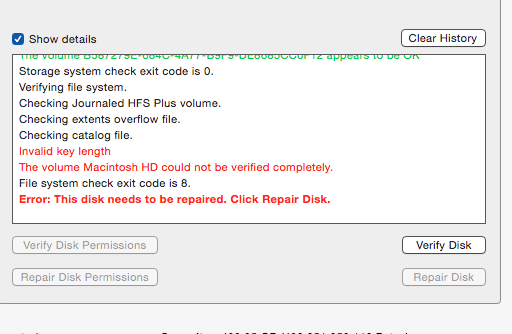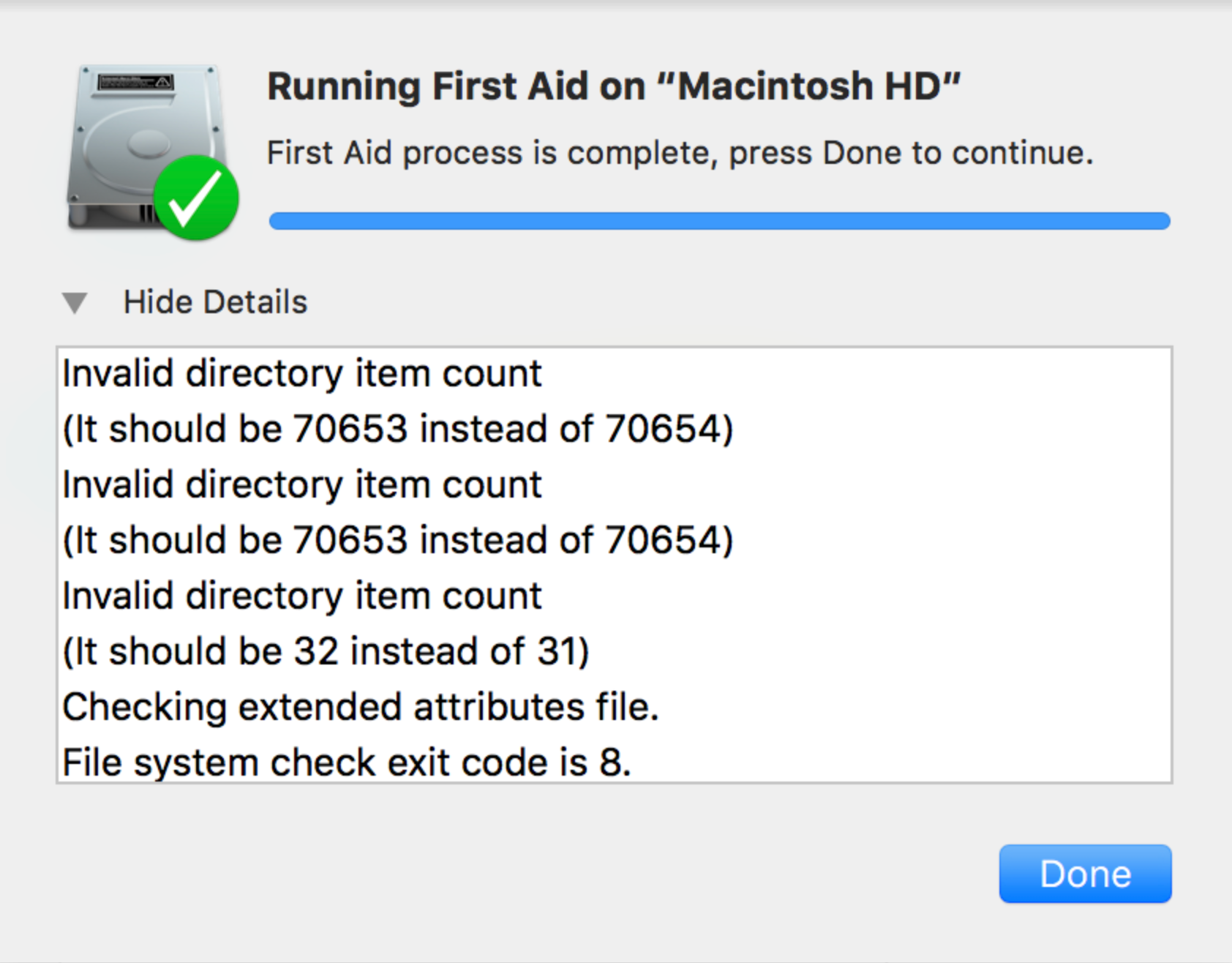

- How to fix file system check exit code is 8 how to#
- How to fix file system check exit code is 8 update#
- How to fix file system check exit code is 8 free#
- How to fix file system check exit code is 8 windows#
Chkdsk examines disk space and disk use and provides a status report specific to each file system. You should use chkdsk occasionally on FAT and NTFS file systems to check for disk errors.
How to fix file system check exit code is 8 windows#
Use the fsutil dirty set command to set the volume's dirty bit (indicating corruption), so that Windows runs chkdsk when the computer is restarted. You can also use the chkntfs /c command to schedule the volume to be checked the next time the computer is restarted. If the drive partition is a boot partition, chkdsk automatically restarts the computer after it checks the drive. If you choose to check the drive the next time you restart the computer, chkdsk checks the drive and corrects errors automatically when you restart the computer. Would you like to schedule this volume to be checked the next time the system restarts? (Y/N) If files are open, the following error message appears: Chkdsk cannot run because the volume is in use by another process. If you want chkdsk to correct disk errors, you cannot have open files on the drive. The /i or /c switch reduces the amount of time required to run chkdsk by skipping certain volume checks. Use this parameter after imaging a volume to a new hard disk drive.
How to fix file system check exit code is 8 free#
NTFS only: Clears the list of bad clusters on the volume and rescans all allocated and free clusters for errors. If you omit the size parameter, /l displays the current size. Changes the log file size to the size you type. Does not check cycles within the folder structure, which reduces the amount of time required to run chkdsk. Performs a less vigorous check of index entries, which reduces the amount of time required to run chkdsk. x also includes the functionality of /f. All open handles to the drive are invalidated. r includes the functionality of /f, with the additional analysis of physical disk errors.įorces the volume to dismount first, if necessary. Locates bad sectors and recovers readable information. If chkdsk cannot lock the drive, a message appears that asks you if you want to check the drive the next time you restart the computer.ĭisplays the name of each file in every directory as the disk is checked. You can use the ? and * wildcard characters to specify multiple files.įixes errors on the disk. Specifies the location and name of a file or set of files that you want chkdsk to check for fragmentation. Use with file allocation table (FAT) and FAT32 only. Specifies the drive letter (followed by a colon), mount point, or volume name.
How to fix file system check exit code is 8 how to#
Rerunning chkdsk checks and repairs any remaining corruption on the volume.įor examples of how to use this command, see Examples. However, canceling or interrupting chkdsk should not leave the volume any more corrupt than it was before chkdsk was run. I also installed the dual boot Windowns and Linux, first installing Windows over the entire SSD, then deallocating space through Windowns and installing Ubuntu, but it is very unlikely that this was the solution to the problem.Interrupting chkdsk is not recommended.
How to fix file system check exit code is 8 update#
The problem was solved by updating the SSD firmware, which was only possible by partitioned Windowns, because Kingston does not have the program to update firmware through Linux. I used HDD and after I switched to SSD the problem came up. In my case, the problem was related to the SSD incompatibility with Ubuntu. The function of this command is to monitor the computer. The experience didn't work out for me, just this command. What was crucial to solving the problem is the use of the dmesg command. I removed the dual boot and left only Ubuntu, upgraded Ubuntu from version 18.04 LTS to version 20.04 LTS, and it didn't work. The computer is also very slow and freezing all the time. If you are editing something you are unable to save and have to execute fsck command and reset the computer. I have had this problem on my computer for over 1 year and tried everything to solve the problem. I hope somebody could point me into the right direction to resolve this issue. Once I restart it manually it just start up without any warning or message saying something is wrong. When I try restarting the server I get : sudo shutdown -r now The Apache error log may have more information. * Starting web server apache2 (30)Read-only file system: apache2: could not open error log file /var/log/apache2/error.log.

Sudo: unable to open /var/lib/sudo/username/1: Read-only file system I can SSH into the server and when trying to start apache2 for example I get the following : sudo service apache2 start And I don't understand why it does so and how to solve it. My server's file system went into Read-only.

The title might not be as descriptive as I would like it to be but couldn't come up with a better one.


 0 kommentar(er)
0 kommentar(er)
